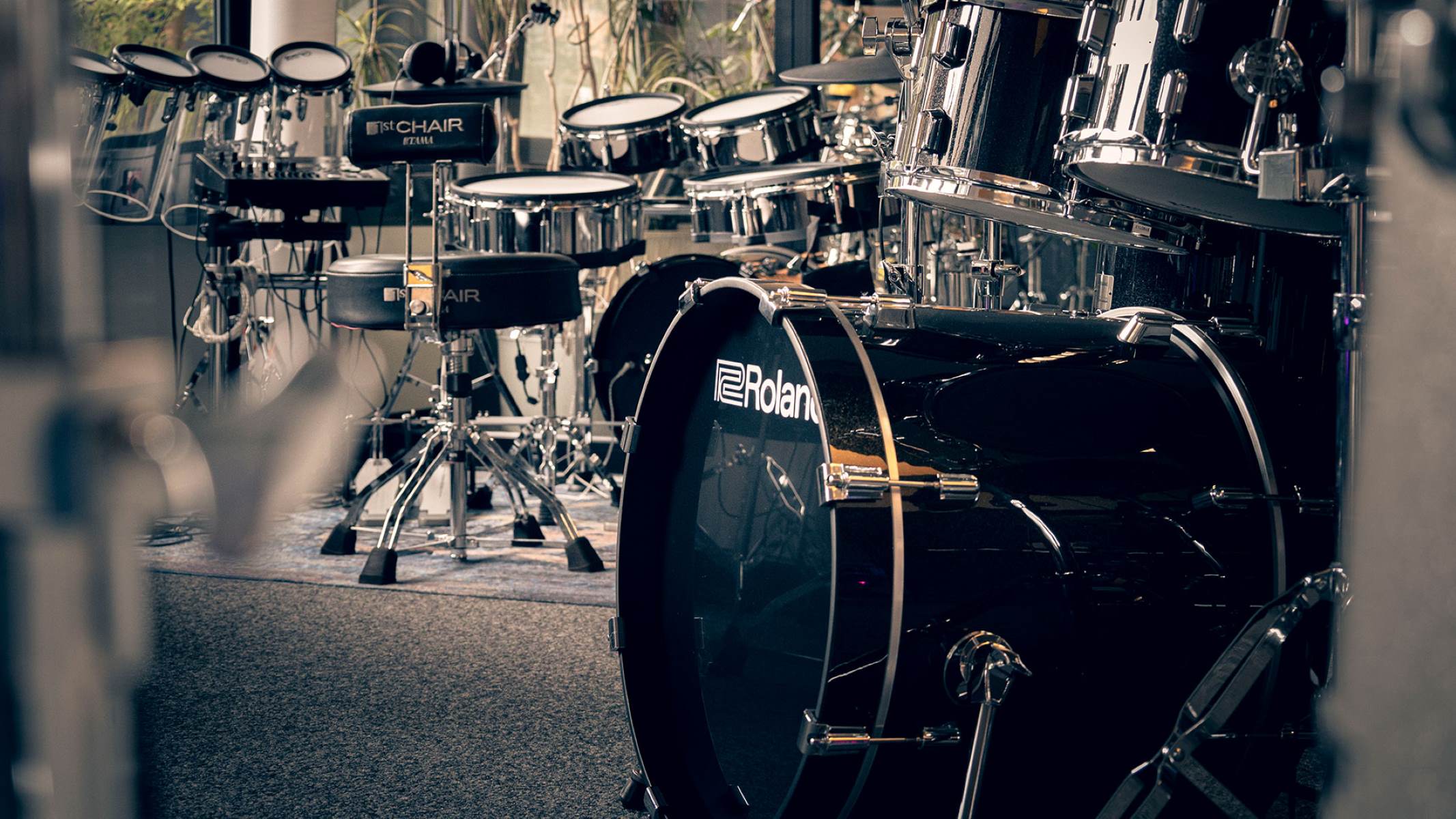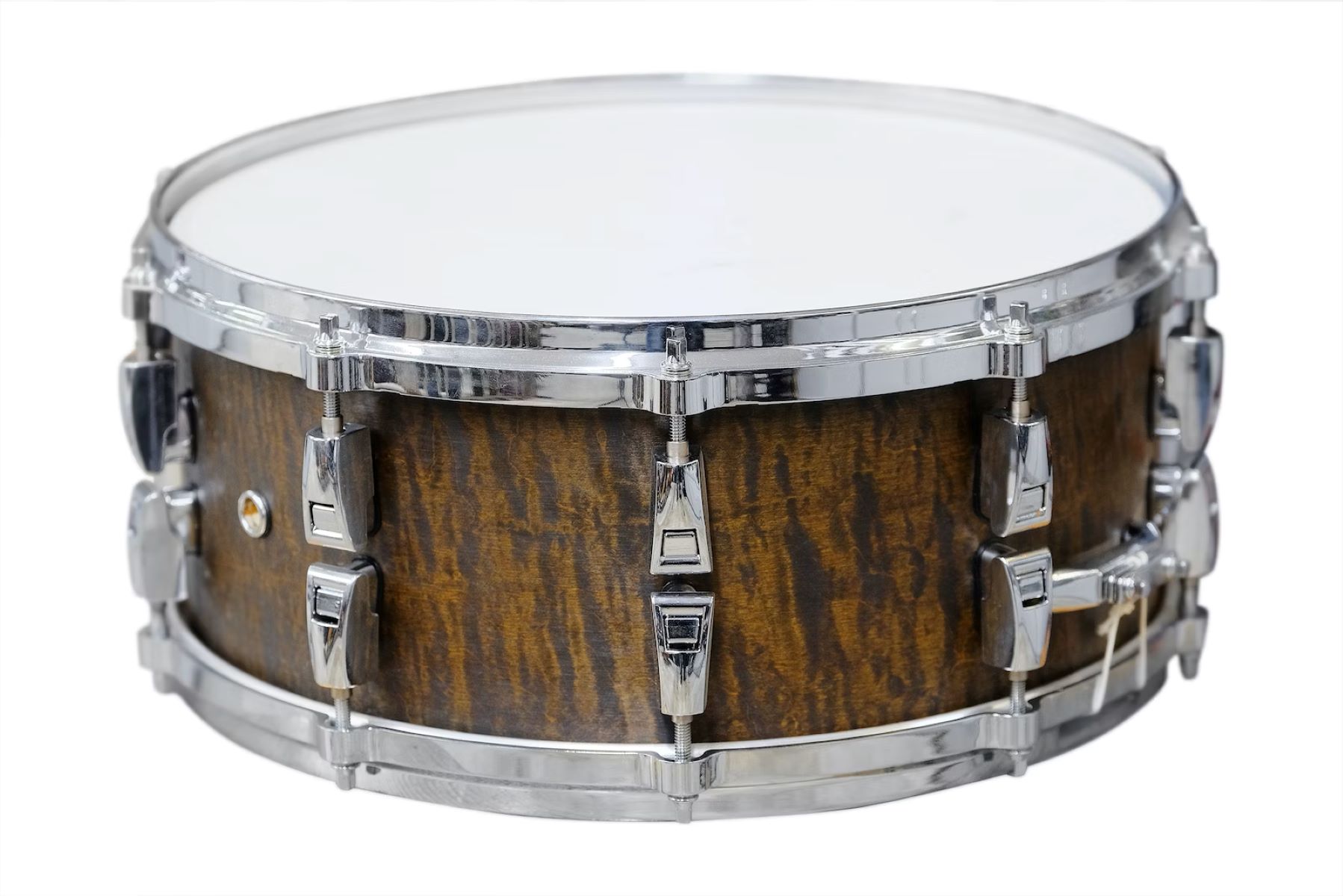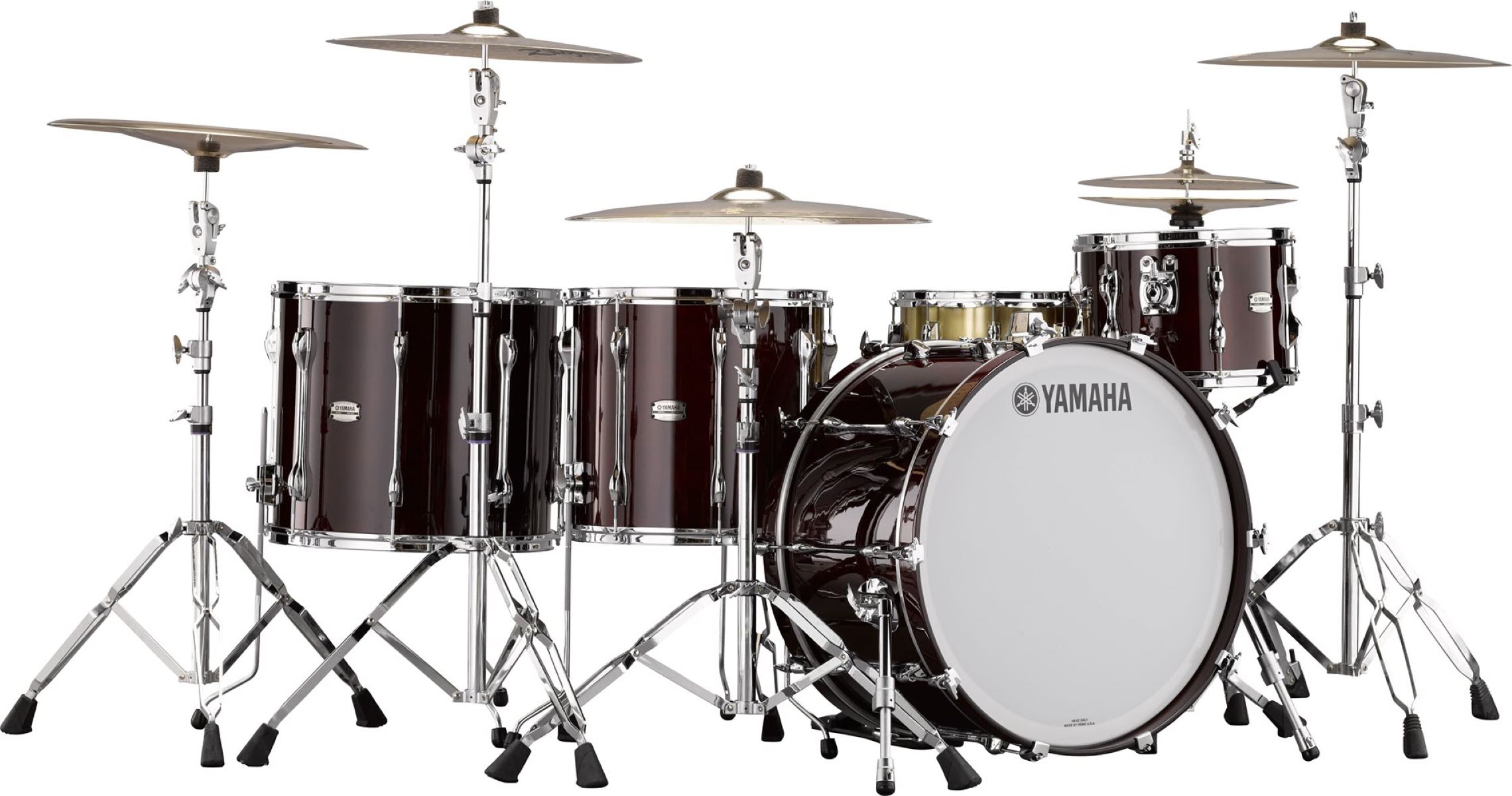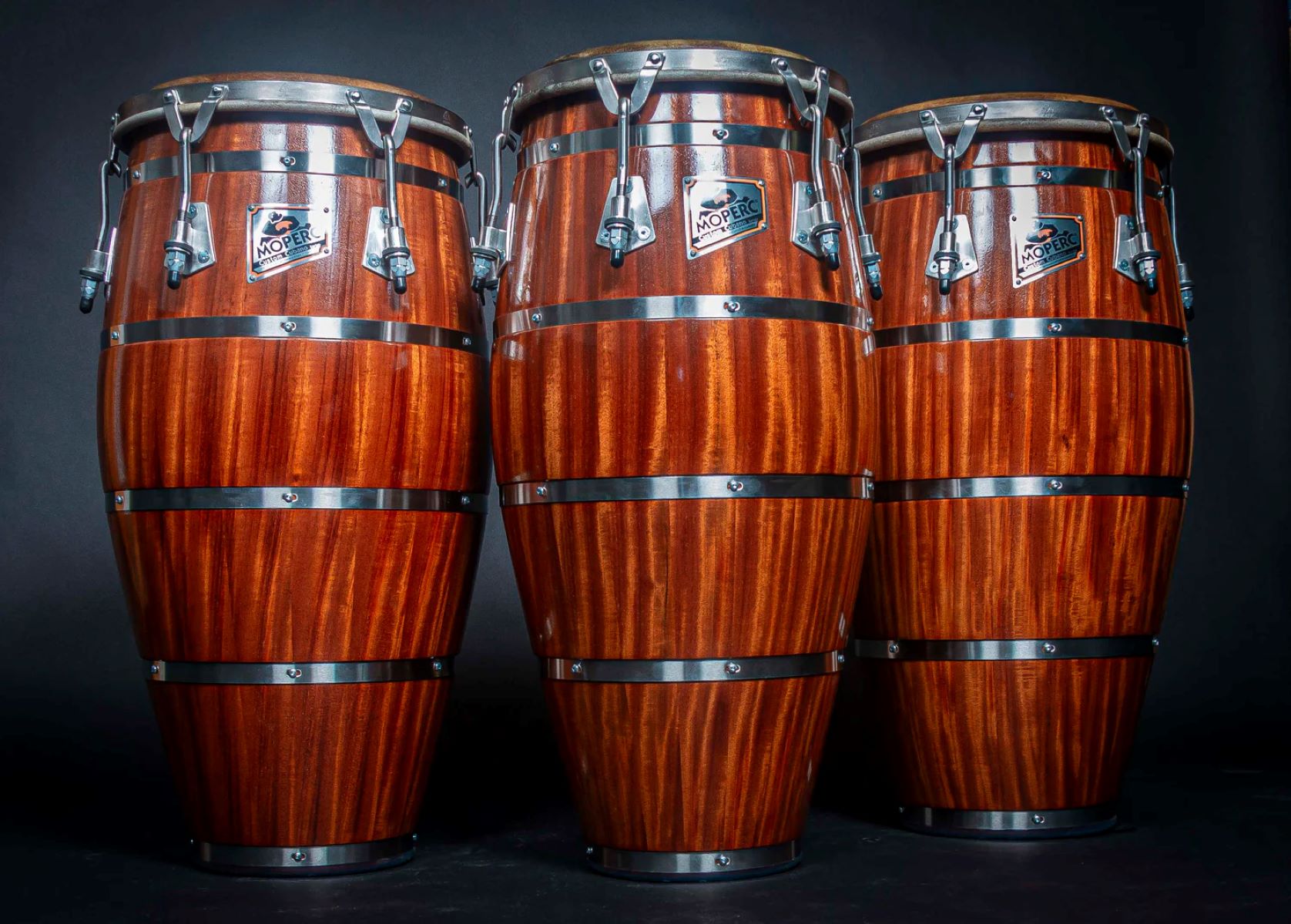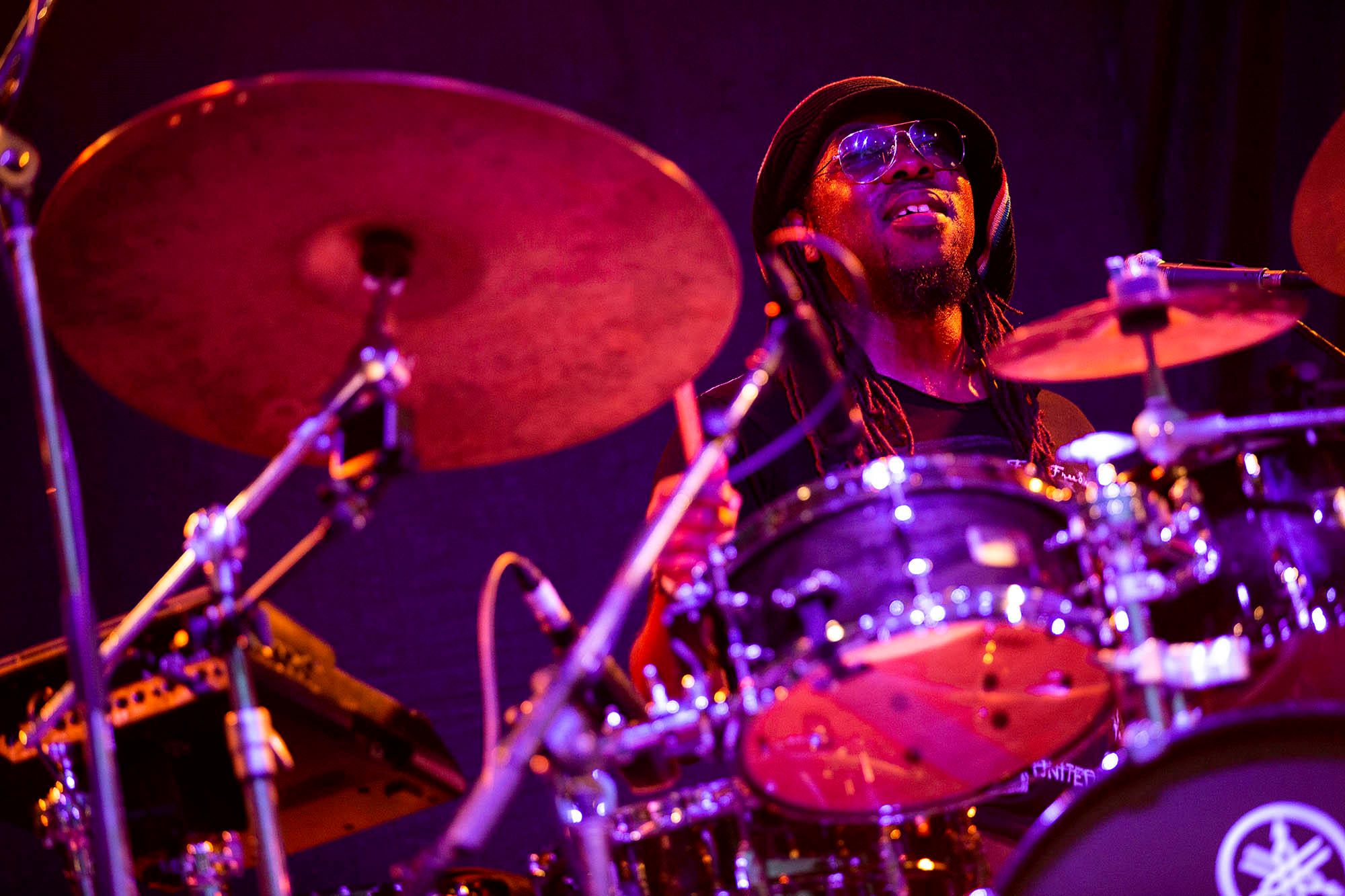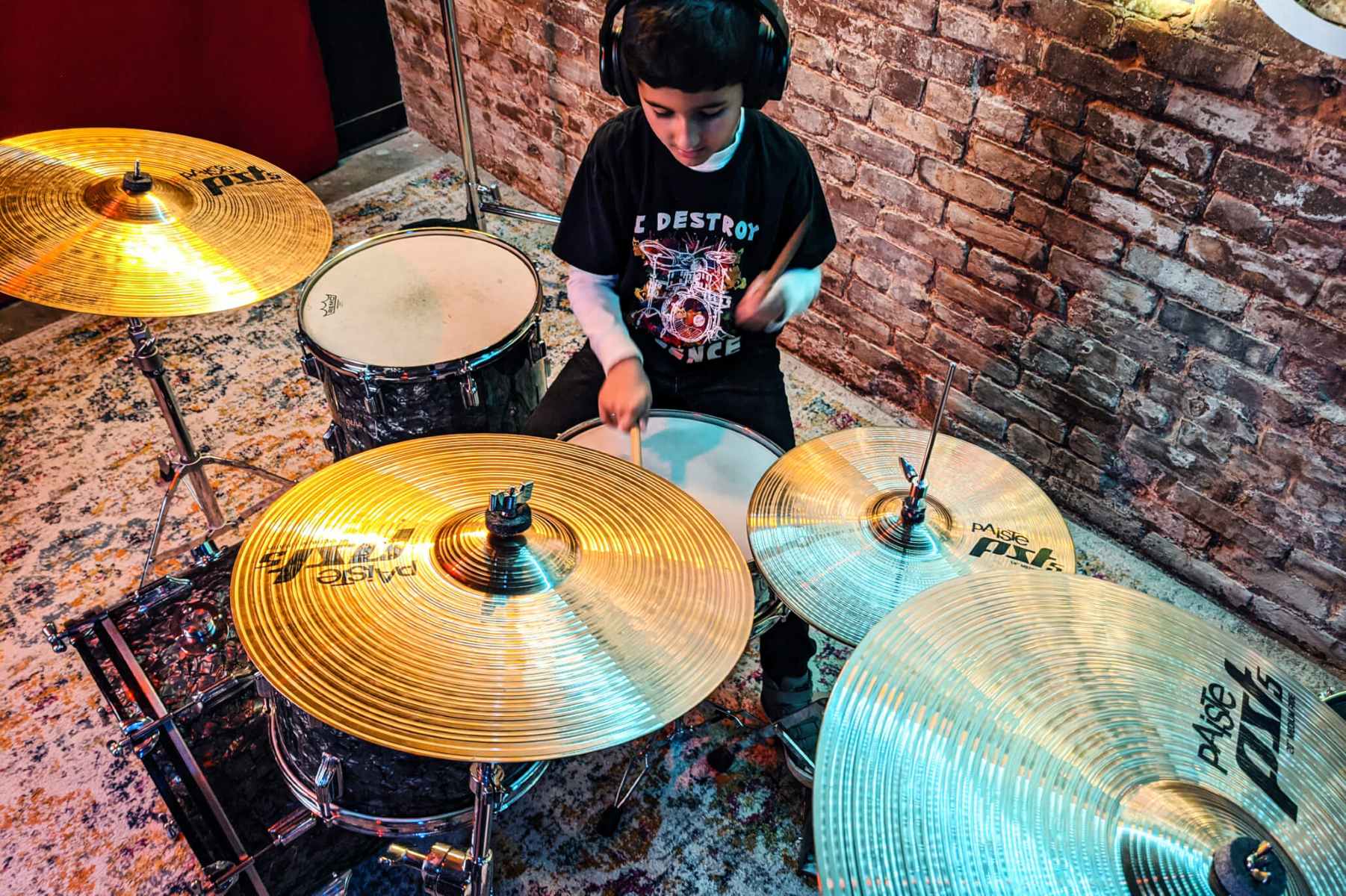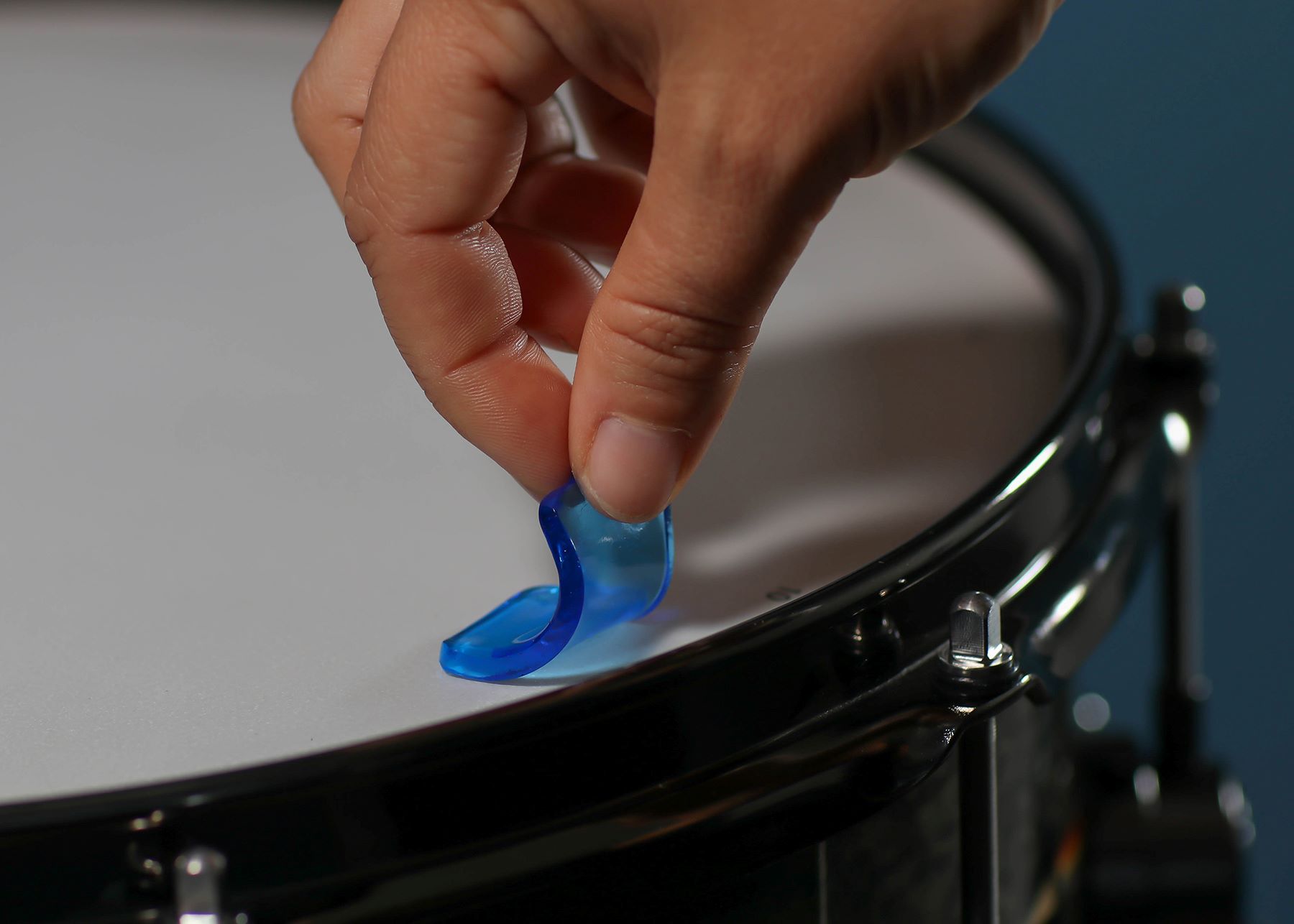Home>Instruments>Drums>What Drums Are In A Drum Set
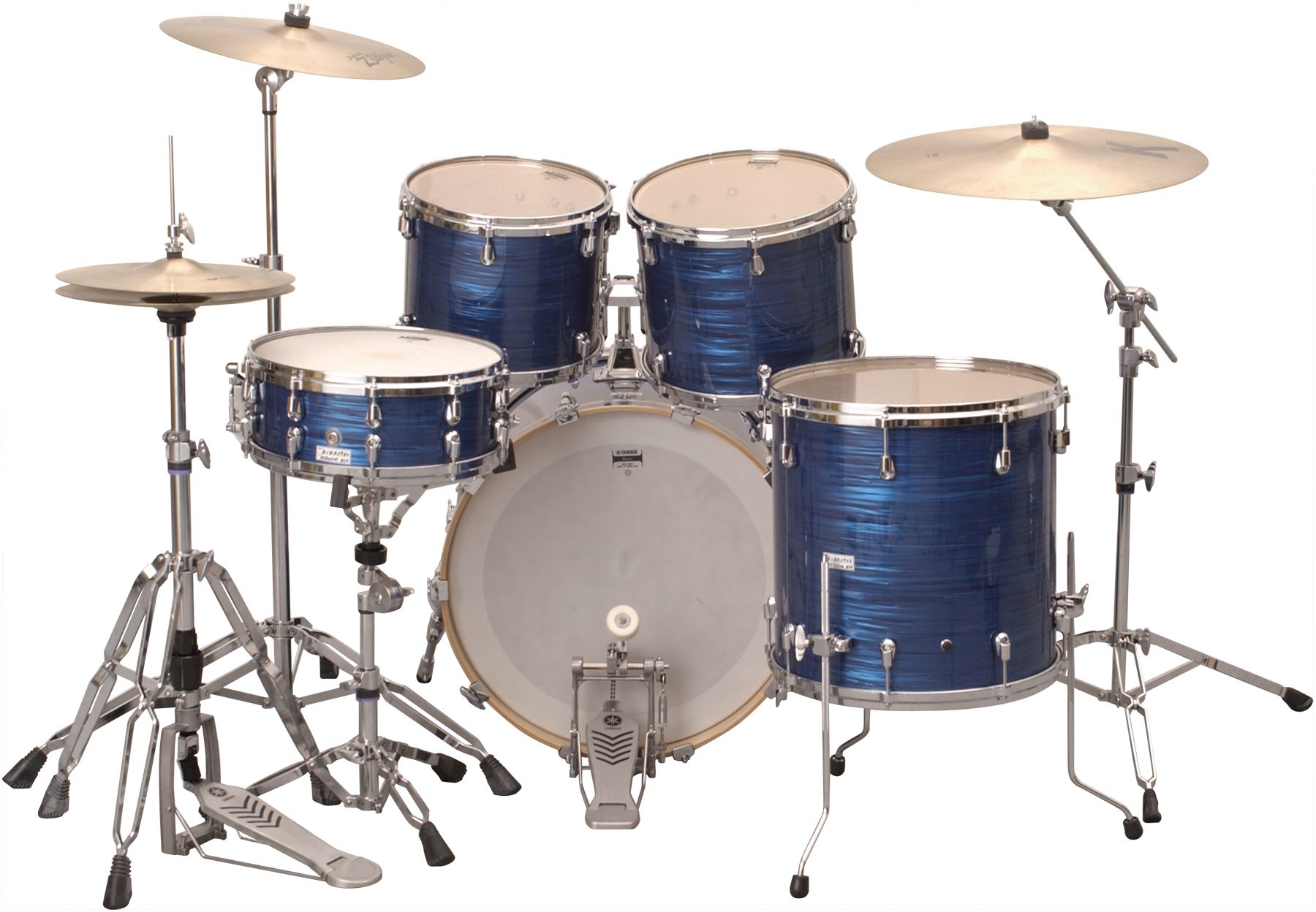

Drums
What Drums Are In A Drum Set
Published: February 9, 2024
Discover the essential drums in a drum set, including bass drums, snare drums, and more. Learn about the different types and their unique roles in creating rhythm and beats.
(Many of the links in this article redirect to a specific reviewed product. Your purchase of these products through affiliate links helps to generate commission for AudioLover.com, at no extra cost. Learn more)
Introduction
Introduction
Drums are an essential part of many music genres, providing rhythm, energy, and depth to musical compositions. A standard drum set, also known as a drum kit, typically consists of several types of drums and cymbals that work together to create a diverse range of sounds. Each component of the drum set plays a unique role in shaping the overall sonic landscape, allowing drummers to express themselves creatively and drive the music forward.
Understanding the different drums in a drum set is crucial for both aspiring drummers and music enthusiasts who want to deepen their appreciation for percussion instruments. In this article, we will explore the various components of a drum set, shedding light on their individual characteristics, functions, and contributions to the overall sound.
From the commanding presence of the bass drum to the crisp articulation of the hi-hat and the explosive impact of the crash cymbal, each element of the drum set has its own distinct personality and sonic signature. By delving into the unique attributes of each drum and cymbal, we can gain a deeper understanding of how they interact and complement one another, ultimately shaping the rhythmic foundation of countless musical compositions.
Bass Drum
The bass drum, also known as the kick drum, serves as the heartbeat of the drum set. This large, low-pitched drum produces a deep, resonant sound that provides the foundational pulse for the music. Typically positioned on the floor and played with a foot pedal, the bass drum is responsible for driving the rhythm and establishing the groove of a song.
In a standard drum set configuration, the bass drum is positioned horizontally on the floor and played with a beater attached to a foot pedal. When the drummer depresses the pedal, the beater strikes the drumhead, producing a powerful thud that reverberates through the music. The bass drum's size and construction contribute to its distinct low-frequency sound, which is felt as much as it is heard.
The bass drum is integral to various musical styles, from rock and metal to jazz and funk. Its deep, booming presence provides a solid foundation for the other instruments to build upon, anchoring the rhythm and driving the music forward. Drummers often use the bass drum to emphasize downbeats, syncopate rhythms, and add dynamic accents to their playing, showcasing its versatility and expressive potential.
In addition to its role as a rhythmic anchor, the bass drum can also be used to create nuanced tonal variations. By adjusting the tension of the drumhead and experimenting with different beater materials, drummers can alter the sound of the bass drum to suit the specific musical context. Whether delivering a thunderous kick or a subtle pulse, the bass drum remains a fundamental component of the drum set, shaping the overall sound with its commanding presence and rhythmic authority.
The bass drum's impact extends beyond its sonic capabilities, as its visual presence adds to the aesthetic appeal of the drum set. With its commanding size and striking appearance, the bass drum stands as a centerpiece of the drum kit, capturing the audience's attention and visually reinforcing the rhythmic power it holds within the music.
In essence, the bass drum stands as a testament to the foundational role of rhythm in music, embodying the pulse and vitality that drive musical compositions forward. Its commanding presence and deep, resonant sound make it an indispensable component of the drum set, showcasing the profound impact that percussion instruments have on shaping the sonic landscape of diverse musical genres.
Snare Drum
The snare drum is a versatile and essential component of the drum set, renowned for its crisp and distinctive sound. Positioned between the drummer’s knees and often referred to as the “backbeat” of the rhythm section, the snare drum plays a pivotal role in shaping the overall sound and feel of a musical composition.
Characterized by its metallic, snappy tone, the snare drum features a set of tightly stretched wires, known as snare wires, that run across the bottom drumhead. When the top drumhead is struck with drumsticks or brushes, the snare wires vibrate, producing the signature snare sound that cuts through the music with precision and clarity.
The snare drum’s ability to produce a sharp, staccato sound makes it an indispensable tool for drummers across various music genres. In rock, pop, and funk music, the snare drum often delivers a powerful and driving backbeat, accentuating the rhythmic pulse and energizing the music with its distinct articulation. In jazz and orchestral settings, the snare drum showcases its dynamic range, from delicate rolls to explosive accents, adding depth and texture to the musical arrangement.
Beyond its rhythmic prowess, the snare drum offers a wide range of playing techniques, allowing drummers to explore different sounds and expressiveness. By adjusting the tuning of the drumheads, modifying the tension of the snare wires, and employing various striking techniques, drummers can evoke an array of tones and textures from the snare drum, enhancing their musical expression and creativity.
Furthermore, the snare drum’s role in creating dynamic fills and transitions within a musical piece cannot be overstated. Its sharp and responsive nature enables drummers to punctuate musical phrases, build tension, and propel the music forward with compelling rhythmic flourishes. Whether delivering rapid fire rolls or commanding rimshots, the snare drum serves as a versatile tool for shaping the ebb and flow of a musical performance.
Visually, the snare drum stands as a focal point of the drum set, with its distinctive shell and snare mechanism capturing the audience’s attention. Its prominent position and sonic impact underscore its significance as a driving force within the rhythmic tapestry of music, solidifying its status as an iconic and indispensable component of the drum set.
In essence, the snare drum’s sharp, expressive sound and dynamic capabilities make it a cornerstone of the drum set, elevating the rhythmic foundation of musical compositions and showcasing the profound influence of percussion instruments on the overall sonic landscape.
Tom-Toms
The tom-toms, often referred to simply as “toms,” are cylindrical drums that contribute depth, texture, and dynamic expression to the drum set. These drums come in various sizes and are typically positioned above the bass drum and to the right of the snare drum, forming an integral part of the drummer’s setup. Toms are renowned for their resonant, melodic qualities, and their versatile sound makes them essential for crafting intricate rhythmic patterns and captivating fills.
Commonly available in a range of diameters, the tom-toms produce distinct pitches, with larger drums delivering deeper tones and smaller ones offering higher, more vibrant sounds. This tonal diversity allows drummers to create compelling rhythmic sequences and melodic accents, adding layers of complexity to their playing and enhancing the overall musical arrangement.
One of the defining features of tom-toms is their ability to facilitate fluid and expressive drum fills. Drummers utilize these drums to transition between different sections of a song, punctuate musical phrases, and build tension leading into climactic moments. The melodic resonance of the toms adds a dynamic dimension to drum fills, enabling drummers to infuse their playing with creativity and flair.
Furthermore, the positioning of the tom-toms within the drum set layout enables seamless navigation across the drums, allowing drummers to execute fluid and engaging rhythmic patterns. By incorporating tom-toms into their playing, drummers can craft intricate and immersive rhythms, showcasing the melodic potential and expressive range of these versatile drums.
From thunderous, floor-mounted toms that deliver commanding low-end presence to agile, higher-pitched rack toms that add shimmering accents, the tom-toms offer a broad spectrum of tonal possibilities. This diversity empowers drummers to explore a wide range of sonic textures, enriching their musical expression and contributing to the overall sonic tapestry of the music.
Visually, the tom-toms stand as a striking and prominent feature of the drum set, with their array of sizes and vibrant finishes capturing the audience’s attention. Their melodic resonance and rhythmic versatility underscore their significance as essential components of the drum set, highlighting the profound impact of percussion instruments on shaping the rhythmic landscape of diverse musical genres.
In essence, the tom-toms’ melodic richness and rhythmic versatility make them indispensable tools for drummers, enhancing the expressive potential and sonic depth of the drum set while contributing to the captivating rhythms that drive musical compositions forward.
Hi-Hat
The hi-hat cymbals are a fundamental and dynamic component of the drum set, renowned for their versatility and expressive capabilities. Consisting of two cymbals mounted on a stand and operated by a foot pedal, the hi-hat offers a spectrum of sonic possibilities, ranging from crisp, closed sounds to shimmering, open tones. Positioned to the left of the snare drum, the hi-hat is essential for shaping the rhythmic feel, adding texture, and driving the groove of a musical composition.
The hi-hat's unique design enables drummers to produce a diverse array of sounds by manipulating the foot pedal and striking the cymbals with drumsticks or brushes. By pressing the pedal, the cymbals can be brought together in a closed position, yielding a sharp and defined sound. Conversely, releasing the pedal allows the cymbals to resonate openly, creating a more expansive and shimmering tone. This dynamic range of sound makes the hi-hat a versatile tool for drummers to craft nuanced and expressive rhythms.
In addition to its sonic versatility, the hi-hat plays a crucial role in establishing the feel and dynamics of a musical piece. Drummers utilize the hi-hat to accentuate beats, drive the groove, and add rhythmic embellishments, contributing to the overall energy and momentum of the music. Its ability to produce precise and articulate sounds makes it an indispensable element for shaping the rhythmic foundation and enhancing the musical dynamics.
Furthermore, the hi-hat's capacity for creating intricate and syncopated patterns adds depth and complexity to drum performances. Drummers can employ a range of techniques, such as foot splashes, chick sounds, and pedal-controlled accents, to infuse their playing with rhythmic intricacy and expressive flair. These nuanced articulations allow the hi-hat to serve as a dynamic and engaging instrument within the drum set, enriching the rhythmic tapestry of musical compositions.
Visually, the hi-hat stands as a prominent and captivating feature of the drum set, with its shimmering cymbals and intricate pedal mechanism drawing the audience's attention. Its dynamic range and expressive potential underscore its significance as a cornerstone of the drum set, highlighting the profound influence of percussion instruments on shaping the rhythmic landscape of diverse musical genres.
In essence, the hi-hat's sonic versatility, rhythmic expressiveness, and dynamic capabilities make it an essential and captivating element of the drum set, elevating the rhythmic foundation of musical compositions and showcasing the profound impact of percussion instruments on the overall sonic landscape.
Crash Cymbal
The crash cymbal is a vibrant and impactful component of the drum set, revered for its explosive sound and dynamic presence. Positioned within easy reach of the drummer, the crash cymbal serves as a versatile tool for accenting musical phrases, punctuating transitions, and adding dramatic flair to drum performances. Its ability to produce a shimmering, explosive sound makes it an essential element for shaping the overall energy and sonic texture of a musical composition.
When struck with drumsticks or mallets, the crash cymbal unleashes a powerful burst of sound, cutting through the music with its brilliant resonance and vibrant sustain. This impactful sound is often used to emphasize climactic moments, signal transitions between song sections, and elevate the intensity of drum performances. The crash cymbal's ability to deliver a bold and arresting sound makes it a pivotal tool for adding drama and impact to musical arrangements.
In addition to its role in creating dramatic accents, the crash cymbal offers a wide range of playing techniques, allowing drummers to explore diverse sonic textures and expressive possibilities. From swift, explosive crashes to subtle, shimmering swells, the crash cymbal enables drummers to evoke a spectrum of emotions and dynamics, enriching the musical narrative with its vibrant tonal palette.
The visual allure of the crash cymbal further enhances its impact within the drum set, with its gleaming surface and commanding presence capturing the audience's attention. Positioned at the forefront of the drum kit, the crash cymbal stands as a striking and visually captivating element, underscoring its significance as a dynamic and essential component of the rhythmic landscape.
In essence, the crash cymbal's explosive sound, expressive versatility, and dramatic impact make it an indispensable and captivating element of the drum set, elevating the rhythmic foundation of musical compositions and showcasing the profound influence of percussion instruments on the overall sonic landscape.
Ride Cymbal
The ride cymbal holds a revered position within the drum set, renowned for its rich, shimmering sound and versatile playing characteristics. Positioned to the right of the drum kit, the ride cymbal serves as a cornerstone of rhythmic expression, offering a broad sonic palette and dynamic range that enhances the musical narrative with its melodic resonance and rhythmic versatility.
Characterized by its distinctive bell and expansive bow area, the ride cymbal produces a warm, sustained sound when struck with drumsticks or mallets. This characteristic sound makes it an essential element for shaping the rhythmic feel, adding melodic accents, and driving the groove of a musical composition. The ride cymbal's ability to produce clear, articulate tones and nuanced dynamics makes it a versatile tool for drummers to craft expressive and immersive rhythms.
In addition to its melodic resonance, the ride cymbal offers a diverse array of playing techniques, allowing drummers to evoke a range of sonic textures and rhythmic expressions. From delicate, shimmering patterns to commanding, rhythmic ostinatos, the ride cymbal empowers drummers to infuse their playing with creativity and finesse, enriching the musical arrangement with its captivating tonal qualities.
The visual presence of the ride cymbal further underscores its significance within the drum set, with its lustrous surface and commanding position capturing the audience's attention. Positioned as a focal point of the drum kit, the ride cymbal stands as a visually captivating and essential component, highlighting its profound influence on shaping the rhythmic landscape and melodic depth of diverse musical genres.
In essence, the ride cymbal's melodic richness, rhythmic versatility, and dynamic capabilities make it an indispensable and captivating element of the drum set, elevating the rhythmic foundation of musical compositions and showcasing the profound impact of percussion instruments on the overall sonic landscape.
Floor Tom
The floor tom stands as a commanding and resonant presence within the drum set, renowned for its deep, thunderous sound and rhythmic versatility. Positioned to the right of the drummer, the floor tom contributes rich, low-frequency tones that add depth, impact, and dynamic expression to musical compositions. Its robust, resonant sound makes it an essential element for shaping the rhythmic foundation and enhancing the sonic texture of the drum set.
Characterized by its large diameter and distinctive shell construction, the floor tom produces a booming, sustained sound when struck with drumsticks. This sonorous quality allows it to serve as a rhythmic anchor, providing a solid foundation for drummers to craft compelling grooves, punctuate musical phrases, and add dramatic impact to their performances. The floor tom's ability to deliver commanding, low-end presence makes it an indispensable tool for driving the rhythmic pulse and adding weight to musical arrangements.
In addition to its commanding presence, the floor tom offers a range of playing techniques that enable drummers to explore diverse rhythmic patterns and expressive possibilities. From thunderous, resonant strokes to intricate, melodic fills, the floor tom empowers drummers to showcase their creativity and finesse, enriching the musical narrative with its powerful and immersive tonal qualities.
The visual prominence of the floor tom further emphasizes its significance within the drum set, with its robust construction and resonant depth capturing the audience's attention. Positioned as a focal point of the drum kit, the floor tom stands as a visually captivating and essential component, highlighting its profound influence on shaping the rhythmic landscape and sonic depth of diverse musical genres.
In essence, the floor tom's commanding sound, rhythmic versatility, and dynamic capabilities make it an indispensable and captivating element of the drum set, elevating the rhythmic foundation of musical compositions and showcasing the profound impact of percussion instruments on the overall sonic landscape.

